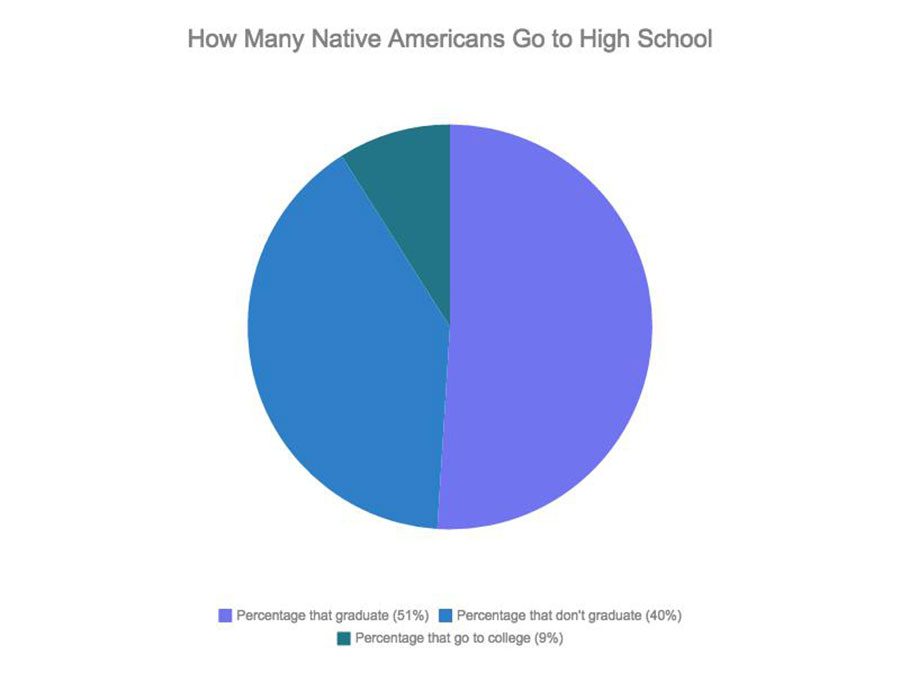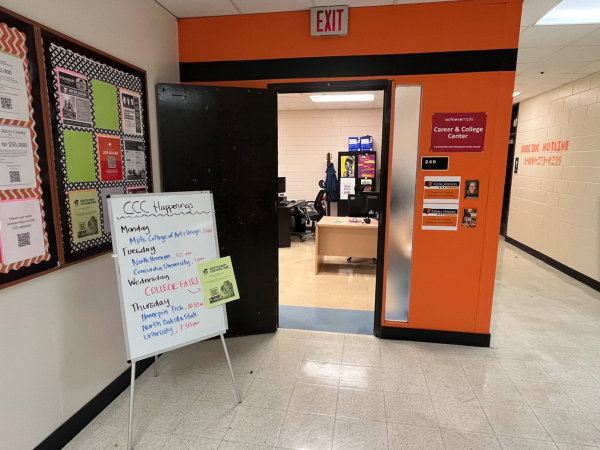U of M Morris is tuition-free for Native American students
2010 Data from US News about Native American high school graduation rate. University of Minnesota Morris offers tuition-free education to Native American students.
December 8, 2016
In recent years, Native Americans have dropping rates for high school graduation. According to US News, in 2010 only about 51% of Native American students in the U.S. graduated from high school. Only 9.3% graduate from college. Many believe that this lack of education for Native Americans is a problem in our country that needs to be solved immediately.
The University of Minnesota Morris campus has a policy that could help solve this called the American Indian Tuition waiver. To apply for this waiver you need to be a member of a recognized Native American tribe, an Alaska Native village, or a Canadian First Nation or a direct descendant of someone in a Native American tribe, an Alaska Native village or a Canadian First Nation. This could benefit many of the students in South’s All Nations program, an academic program designed specifically for Native Americans, and that teaches Native American based curriculum.
However, Morris’ history is not perfect. The first buildings on the land that is now Morris were part of the “Morris Industrial School for Indians”. This was one of boarding school across the United States where Native American students were forced to cut their hair, speak only English and in general, . In 1909, they became an agricultural school but due to past treaty obligations, it was required that Native Americans would be allowed to attend tuition-free. That rule lives on till today.
Vincent Patton is an alumni from the U of M Morris and an All Nations teacher. He is someone who took advantage of the tuition waiver. Patton believes “the best thing that they could do is allow Native American students to come in and with that free tuition thing it’s an incentive for them to come there.”
Patton believes the program should be expanded saying, “If anything waive the tuition at all, Morris needs all the help they can get.” He also believes that more minorities should be in the program. “I don’t think it should be all races…it should be focused on is the races and ethnicities that are underrepresented in the college.” He added on by saying “Whatever the school is lacking in that diversity area that should be applied to it.”
Vivian Olmeda is a sophomore student in the All Nations program. She thinks the policy could be a benefit because “Many Natives struggle to get money as is as far as getting at least two years of college.”
Olmeda believes it should be applied to more colleges and not only for Native Americans.“If you’re going to lower the balances it should be open to anyone, not just Natives,” she said. She believes it should apply to anyone who is in a difficult financial situation.
There are many different strategies used by colleges to encourage Native American students, and students in general to attend their college, and providing free tuition can be one of the most effective. For any student wishing to attend college, it’s important to do research before to see if there are any scholarships that they qualify for.














Kameka Bush • Apr 2, 2018 at 4:22 pm
University of Morris sounds like an excellent collage for me! In 2 1/2 years though…. I’m still a 10th grader…!